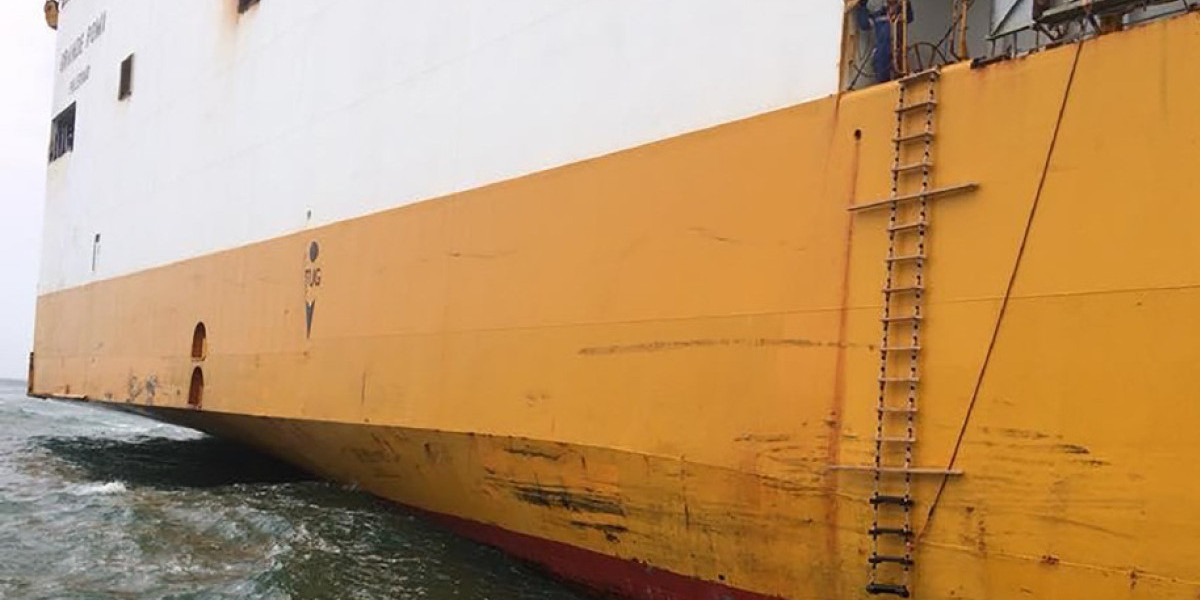Pilot ladder safety is paramount in maritime operations to prevent accidents and ensure the well-being of pilots, crew members, and vessels. Adhering to best practices and implementing effective risk mitigation strategies is essential for enhancing safety during pilot transfers. In this article, we outline key safety considerations, best practices, and risk mitigation strategies for Pilot ladder training operations.
Risk Factors Associated with Pilot Ladder Operations:
1. Slippery Surfaces:
Wet or slippery ladder steps pose a significant risk of slips, trips, and falls during pilot transfers, especially in adverse weather conditions or rough seas.
2. Structural Integrity:
Damage or deterioration of ladder ropes, steps, and attachments can compromise the structural integrity of pilot ladders, leading to accidents or failures during use.
3. Improper Rigging:
Incorrect rigging of pilot ladders, such as inadequate securing or incorrect angle of inclination, can increase the risk of instability and accidents during embarkation and disembarkation.
4. Environmental Factors:
Environmental factors such as high winds, strong currents, and rough seas can exacerbate the risks associated with pilot ladder operations, making safe transfers more challenging.
Best Practices for Pilot Ladder Safety:
1. Regular Inspection and Maintenance:
Implement a rigorous inspection and maintenance program to identify and address any defects or issues with pilot ladders promptly. Inspect ladder ropes, steps, spreaders, and attachments for wear, damage, or corrosion regularly.
2. Proper Rigging and Deployment:
Ensure pilot ladders are rigged and deployed correctly, following established procedures and guidelines. Maintain the correct angle of inclination and secure attachment points to the ship's side to minimize the risk of ladder instability.
3. Non-Slip Surfaces:
Apply non-slip coatings or materials to ladder steps to improve traction and reduce the risk of slips and falls, particularly in wet or slippery conditions.
4. Use of Safety Equipment:
Provide pilots and crew members with appropriate personal protective equipment (PPE), such as harnesses, life jackets, and helmets, to enhance safety during pilot transfers.
5. Crew Training and Awareness:
Conduct regular training sessions and drills to educate crew members on best practices for pilot ladder safety, including proper rigging, deployment, and emergency procedures. Foster a culture of safety awareness and vigilance among all personnel involved in pilotage operations.
Risk Mitigation Strategies:
1. Adverse Weather Protocols:
Implement protocols and procedures for pilot transfers in adverse weather conditions, including wind limits, sea state assessments, and contingency plans for emergency situations.
2. Emergency Response Plans:
Develop comprehensive emergency response plans for pilot ladder accidents or failures, outlining procedures for rescue, medical assistance, and communication with authorities.
3. Collaboration with Pilots:
Collaborate closely with pilots to assess risks and address concerns related to pilot ladder operations, ensuring effective communication and coordination during transfers.
Conclusion:
Pilot ladder safety is a critical aspect of maritime operations, requiring careful attention to best practices and risk mitigation strategies. By implementing regular inspection and maintenance programs, adhering to proper rigging and deployment procedures, and providing adequate training and equipment for crew members, maritime stakeholders can enhance the safety and efficiency of pilot transfers. Continuous vigilance, collaboration, and adherence to established safety protocols are essential for preventing accidents and ensuring the well-being of all personnel involved in pilotage operations.








